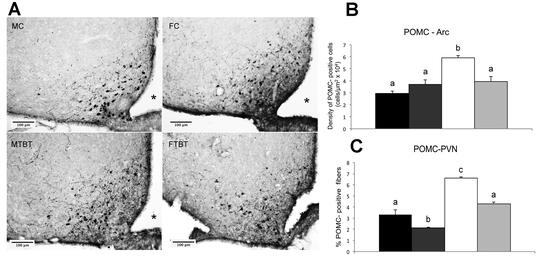
Cell Tissue Research
, 4 August 2018
Chronic treatment with tributyltin induces sexually dimorphic alterations in the hypothalamic POMC system of adult mice.
Farinetti A 1,2 , Marraudino M 1,2 , Ponti G 2,3 , Panzica GC 1,2, Gotti S 4,5
Tributyltin (TBT) is a common anti-fouling agent used in boat paints and it is present in many household items. Although its use is currently limited, its levels are still contaminating the waters and, over time, TBT has been absorbed by aquatic animals and biologically accumulated along the food chain. It has been introduced into the list of endocrine disruptors (EDCs) since it could bind androgen receptors. Recently, TBT has been introduced into the list of metabolic disruptors (MDCs) for its ability to interfere with adipose tissue and its metabolism.
Previous studies conducted in our laboratory have shown that TBT also acts at the level of the hypothalamic neuroendocrine system that regulates food intake and energy metabolism. In particular we have shown that TBT interferes with the NPY system (which stimulates hunger) .
The aim of the present study was to expand the research to the POMC system (the brain circuit that induces the feeling of satiety).
With this study we have shown that TBT exposure for one month modulates this system differently between males and females, with an obesogenic effect. Mouse females exposed to TBT show a reduction in the number of POMC cells in the arcuate nucleus of the hypothalamus and in the innervation in the paraventricular nucleus (PVN) and in the dorsomedial nucleus of the females, while, in males, the decrease is limited to PVN. These data suggest that TBT can promote or increase susceptibility to metabolic changes that can lead to metabolic diseases.
(A) Microphotographs illustrating the distribution of POMC-immunopositive cells in arcuate nucleus (ARC). MC= Male Control group (n=7), MTBT= Male treated with TBT group (n=7), FC= Female Control group (n=7), FTBT= Female treated with TBT group (n=7). * = third ventricle. (B) the graph represents the quantitative analyses of the density of POMC-positive cells in ARC. (C) the graph represents the quantitative analyses of the density of POMC-positive fibers in PVN. Significant differences (p <0.05) are indicated by different letters (a or b).








